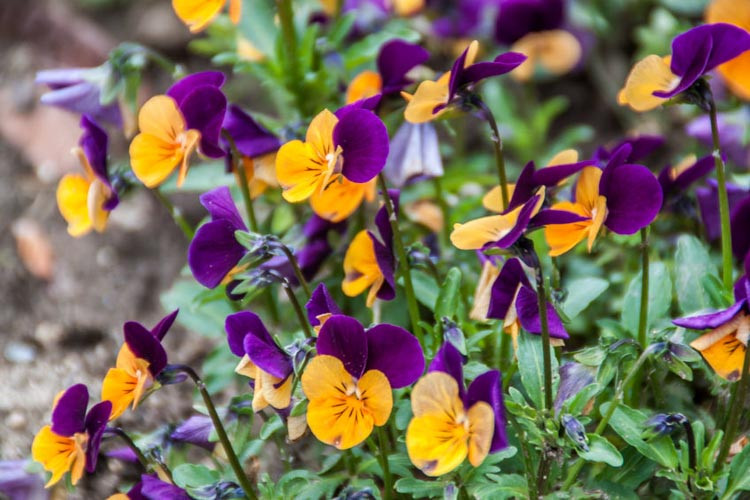Viola (Violet)
Viola is a diverse genus of flowering plants belonging to the Violaceae family, comprising over 500 species varying in size, growth habit, and color. The genus includes well-known plants like violets and pansies, cherished for their delicate and colorful blooms. Viola species can be found across temperate regions in the Northern and Southern Hemispheres, ranging from tiny wildflowers to cultivated garden varieties.
Violas display a wide range of growth habits, from low-growing ground covers to taller, clump-forming perennials. Many species, such as Viola odorata (sweet violet), spread to form a dense mat, making them ideal for ground cover or border planting. In contrast, some cultivated pansies (Viola x wittrockiana) are often used as bedding plants.
Hardiness varies among viola species, with many being cold-tolerant perennials or biennials that can survive freezing temperatures. Some are even adapted to alpine environments, while others are more suited to milder climates. Generally, violas are adapted to USDA hardiness zones 3-9, depending on the species and cultivar.
Viola flowers come in a wide array of colors, including purple, blue, white, yellow, and various bicolor combinations. The blooms typically consist of five petals, with the lower petal often featuring a spur or nectar pouch, which attracts pollinators like bees and butterflies. Like those of Viola odorata, the flowers can be fragrant or have little to no scent. The blooming season for violas varies by species but generally occurs in spring, with some species providing sporadic blooms throughout summer and even into fall.
Violas have multiple uses and benefits in the garden and beyond. They are excellent ground cover plants, suppressing weeds and providing a colorful carpet during their blooming season. They attract pollinators, such as bees and butterflies, which are essential for a healthy ecosystem. Many viola species also have edible flowers and leaves, which can be used in salads, desserts, teas, or as decorative garnishes.
In summary, the Viola genus is a diverse and versatile group of plants, offering gardeners a wide range of options for adding beauty, fragrance, and ecological benefits to their landscapes. With their varied growth habits, hardiness, and colorful flowers, violas can be incorporated into many different garden settings, from woodland gardens and borders to containers and rockeries.

